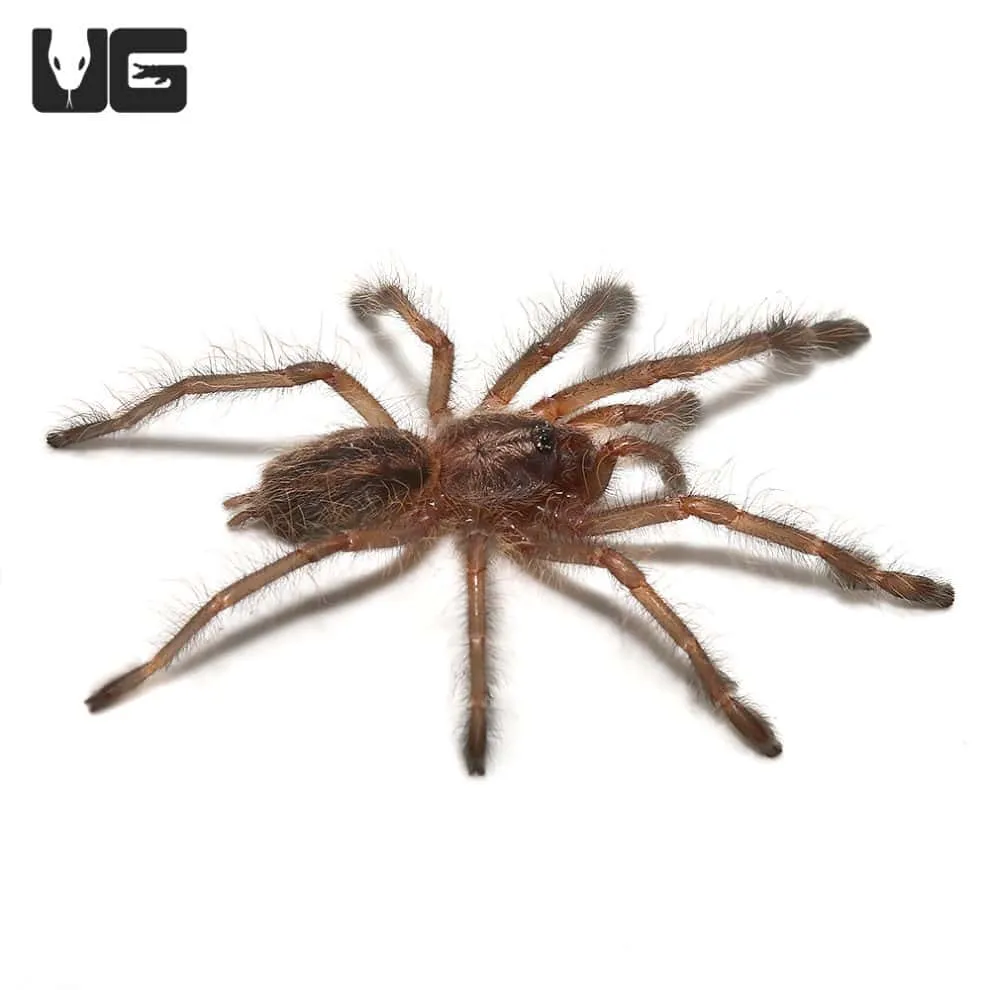What is a Sapphire Ornamental Tarantula?
The Sapphire Ornamental Tarantula, scientifically known as Poecilotheria metallica, is a striking species of tarantula native to a small region of India. Celebrated for its vibrant coloration and unique characteristics, this arboreal tarantula has become a popular, albeit challenging, pet for experienced arachnid enthusiasts. Their mesmerizing appearance, combined with a relatively reclusive nature, makes them a captivating subject of study and admiration. However, their potent venom and specific care requirements mean they are not suitable for beginners. Understanding the Sapphire Ornamental Tarantula involves appreciating its origin, its distinctive appearance, and the particular needs of its captive environment.
Origin and Habitat
The Sapphire Ornamental Tarantula is endemic to a small, specific area in the Andhra Pradesh region of India. In its natural habitat, this tarantula species thrives in the high canopy of trees, constructing webs in the hollows of trees and under loose bark. This arboreal lifestyle is a critical aspect of their behavior and influences their needs in a captive setting. The climate in their native environment is typically hot and humid, with seasonal variations in rainfall. Preserving their natural habitat is essential for the survival of the species, as deforestation and habitat loss pose significant threats to their wild populations. These tarantulas have developed unique survival strategies to adapt to their specific environment.
Appearance and Characteristics
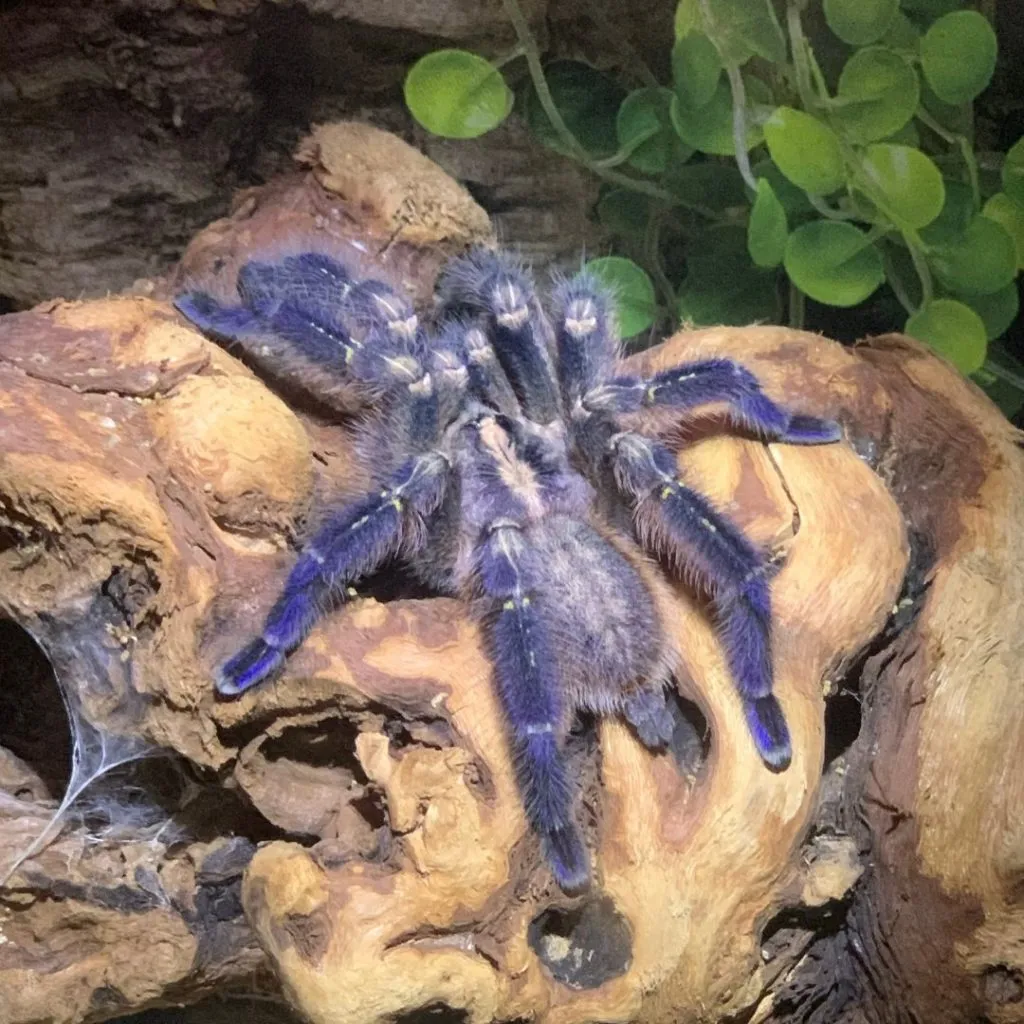
As the name suggests, the Sapphire Ornamental Tarantula is renowned for its spectacular coloration. The spider’s base color is typically a dark, velvety black, contrasted by vivid metallic blue or sapphire-colored markings on its legs and carapace. These metallic hues can shimmer and shift in different lighting conditions, adding to their allure. Their leg span can reach up to 7-8 inches, making them a relatively large species. They possess a characteristic pattern of intricate markings that distinguish them from other tarantula species. The combination of size and color makes them one of the most visually stunning tarantulas in the hobby. The overall appearance contributes to their desirability among collectors and enthusiasts.
Top 7 Facts About the Sapphire Ornamental Tarantula
Fact 1 Exquisite Coloration
The Sapphire Ornamental Tarantula’s most distinguishing feature is its striking coloration. The dark background, typically black or dark brown, provides a stark contrast to the brilliant blue or sapphire markings that adorn the legs and carapace. The iridescent quality of these colors adds to their visual appeal, making each individual spider unique. The intensity of the blue can vary depending on the spider’s age, health, and even the lighting conditions. The mesmerizing appearance is a significant factor in their popularity among tarantula enthusiasts. Their beauty is a key element that attracts collectors and hobbyists.
Fact 2 Arboreal Lifestyle
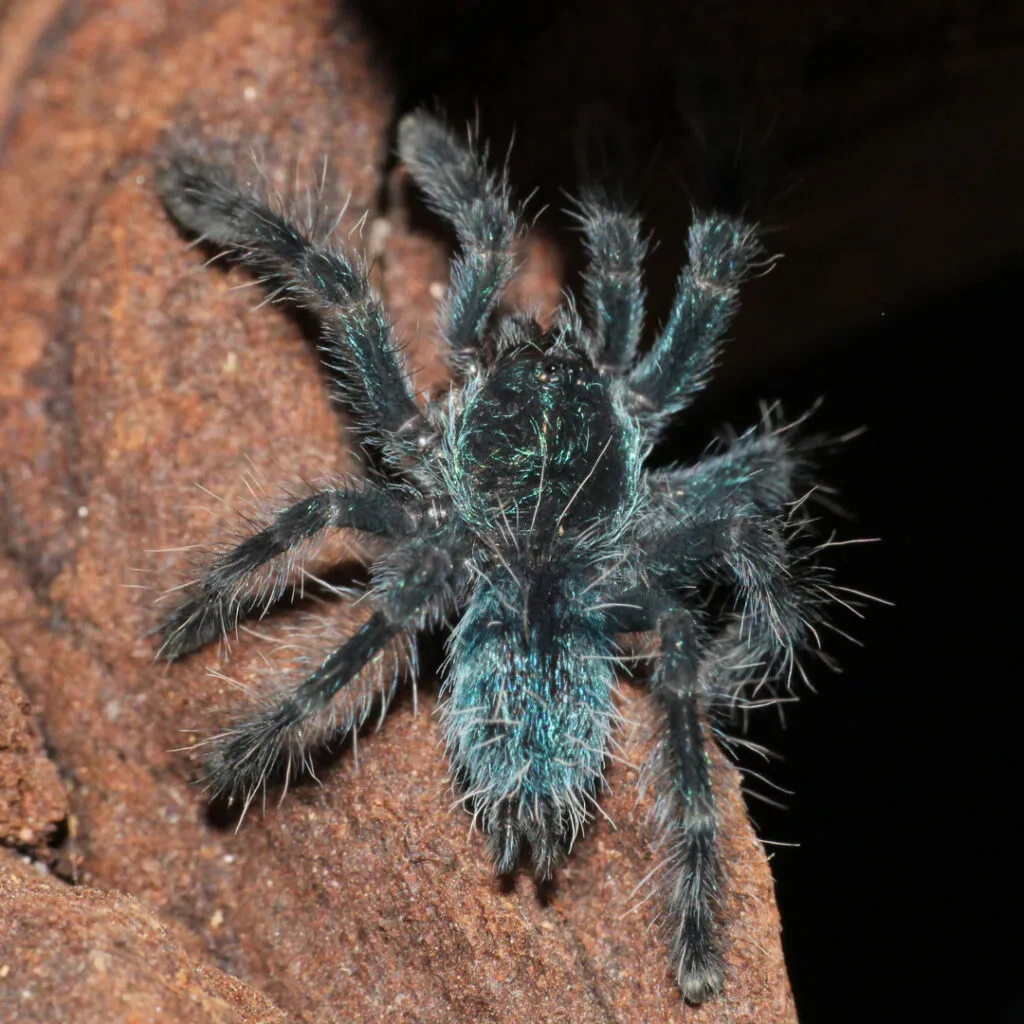
Sapphire Ornamental Tarantulas are arboreal, meaning they live primarily in trees. This is a crucial factor to consider when providing them with adequate care in captivity. They construct webs in the hollows of trees or under loose bark, and their behavior is adapted to this environment. This lifestyle influences their need for vertical space and suitable climbing structures within their enclosure. Their arboreal nature also means they are agile climbers and prefer to hide in elevated locations. The understanding of their lifestyle is essential for replicating their natural habitat within a captive environment. This behavior is unique to their species.
Fact 3 Potent Venom
The Sapphire Ornamental Tarantula possesses potent venom. While not generally considered lethal to humans, their bite can be quite painful and cause significant discomfort. Symptoms can include muscle cramps, localized pain, swelling, and other systemic effects. Due to the potency of their venom, caution is required when handling or interacting with these tarantulas. Venom potency can vary between individuals, but it is always best to treat them with respect. Proper handling techniques and awareness of potential risks are crucial for responsible ownership. Their venom is part of their defensive mechanisms.
Fact 4 Defensive Behaviors
Sapphire Ornamental Tarantulas exhibit a range of defensive behaviors. When threatened, they may raise their front legs, display their fangs, and hiss as a warning. They can also flick urticating hairs from their abdomen as a defense mechanism. These hairs can cause skin irritation and discomfort if they come into contact with human skin or eyes. They are known to be quite fast and can attempt to flee or bite if they feel cornered. Understanding these defensive behaviors is essential for safe handling and preventing bites or other negative interactions. Always respect their space and provide them with plenty of hiding places.
Fact 5 Relatively Fast Growth
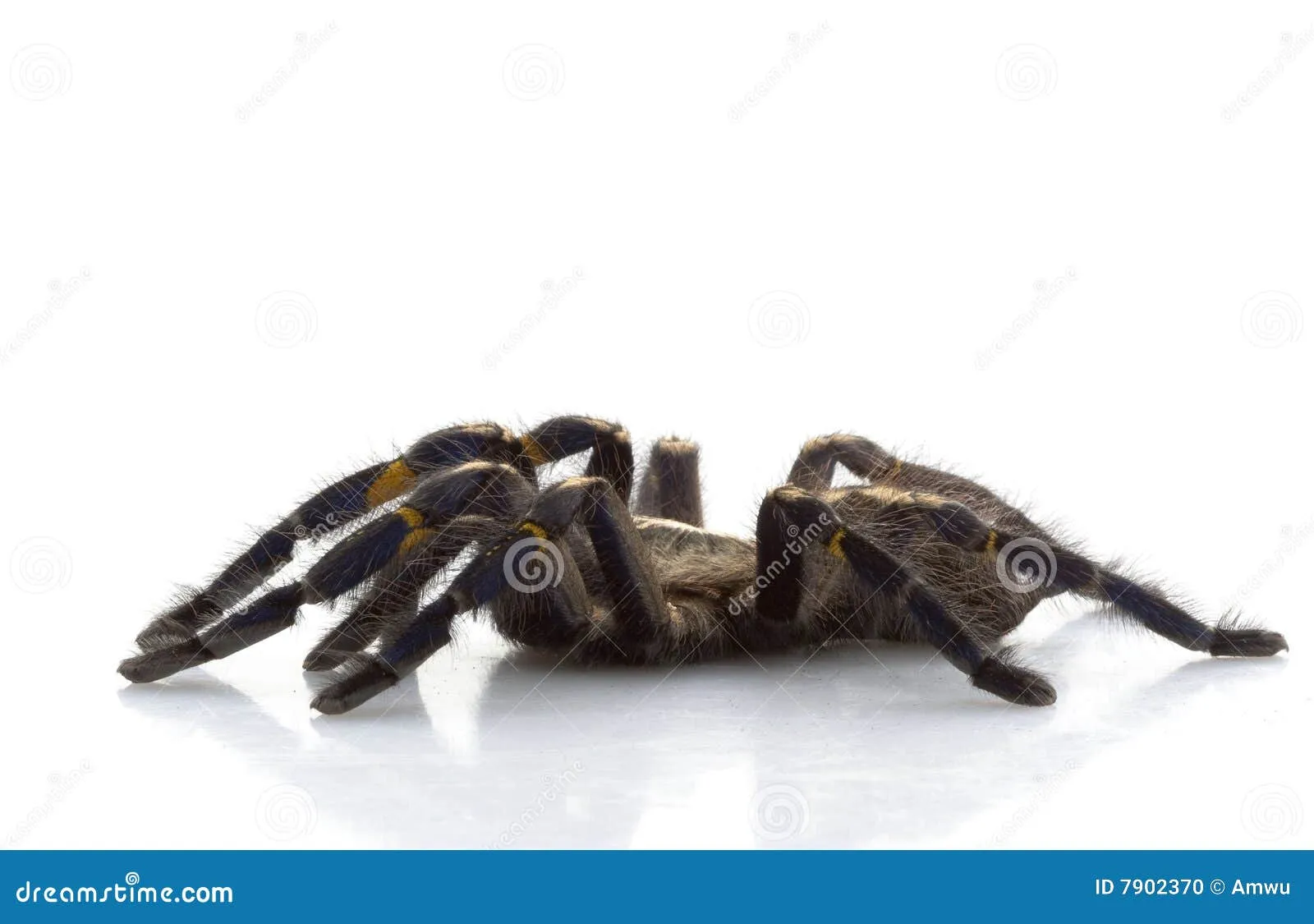
Compared to some other tarantula species, the Sapphire Ornamental Tarantula tends to grow relatively quickly, particularly during its juvenile stages. This means that they will molt more frequently as they mature, shedding their exoskeleton to grow. Proper feeding and consistent environmental conditions contribute to their healthy growth. The rate of growth can also be influenced by factors such as temperature and humidity. Observing their growth provides valuable insights into their health and well-being. Regular molting is a sign of a healthy and growing tarantula.
Fact 6 Lifespan Considerations
The lifespan of a Sapphire Ornamental Tarantula can vary, but females generally live longer than males. Females can live for 10-15 years or even longer under optimal care conditions. Males, on the other hand, typically have a shorter lifespan, often only living for 3-5 years after reaching maturity. Proper care, including appropriate temperature, humidity, and diet, significantly influences their longevity. Their lifespan needs to be considered when deciding to acquire one. It is important to understand the commitment associated with owning a tarantula for an extended period.
Fact 7 Captive Care Popularity
The Sapphire Ornamental Tarantula is a highly sought-after species in the tarantula hobby, attracting experienced keepers due to its stunning appearance and interesting behaviors. However, their specific care requirements and potent venom make them unsuitable for beginners. Captive-bred specimens are often preferred, as they are typically hardier and better adapted to captive environments. Careful research and preparation are essential before acquiring a Sapphire Ornamental Tarantula. The popularity of this species reflects their beauty but also the responsibility involved in providing them with proper care. They are a beautiful specimen that require experience.
Caring for Your Sapphire Ornamental Tarantula
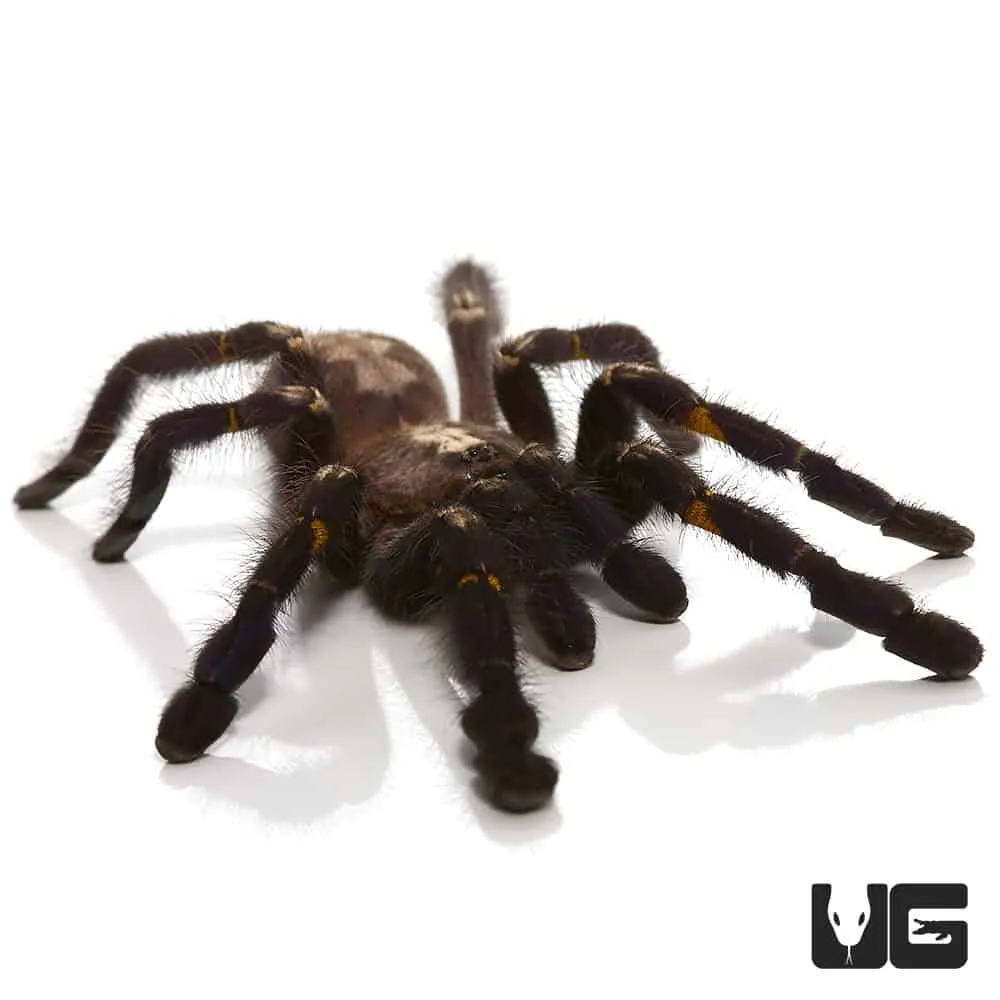
Creating the Ideal Enclosure
Creating a suitable enclosure is paramount to the health and well-being of your Sapphire Ornamental Tarantula. An appropriately sized enclosure is crucial, considering their arboreal nature. They require a vertically oriented terrarium, with the height being more important than the floor space. A secure lid is essential to prevent escape. The enclosure should also offer ample ventilation to maintain air quality and prevent the build-up of excessive humidity. The enclosure’s design should replicate their natural habitat, providing climbing opportunities and secure hiding places. A well-designed enclosure is crucial for this species.
Substrate and Furnishings
The substrate is the base layer of your tarantula’s enclosure and plays a critical role in maintaining humidity and providing a comfortable environment. A substrate that retains moisture without being overly soggy is ideal. A mix of coco fiber, peat moss, and a small amount of vermiculite can be used. Adding leaf litter and other natural elements is a way to enhance the enclosure. The furnishings include a sturdy piece of cork bark or a similar structure to provide a hiding place and climbing opportunities. Provide water dish and a few fake plants to add more security. The arrangement of furnishings should replicate their natural environment.
Temperature and Humidity
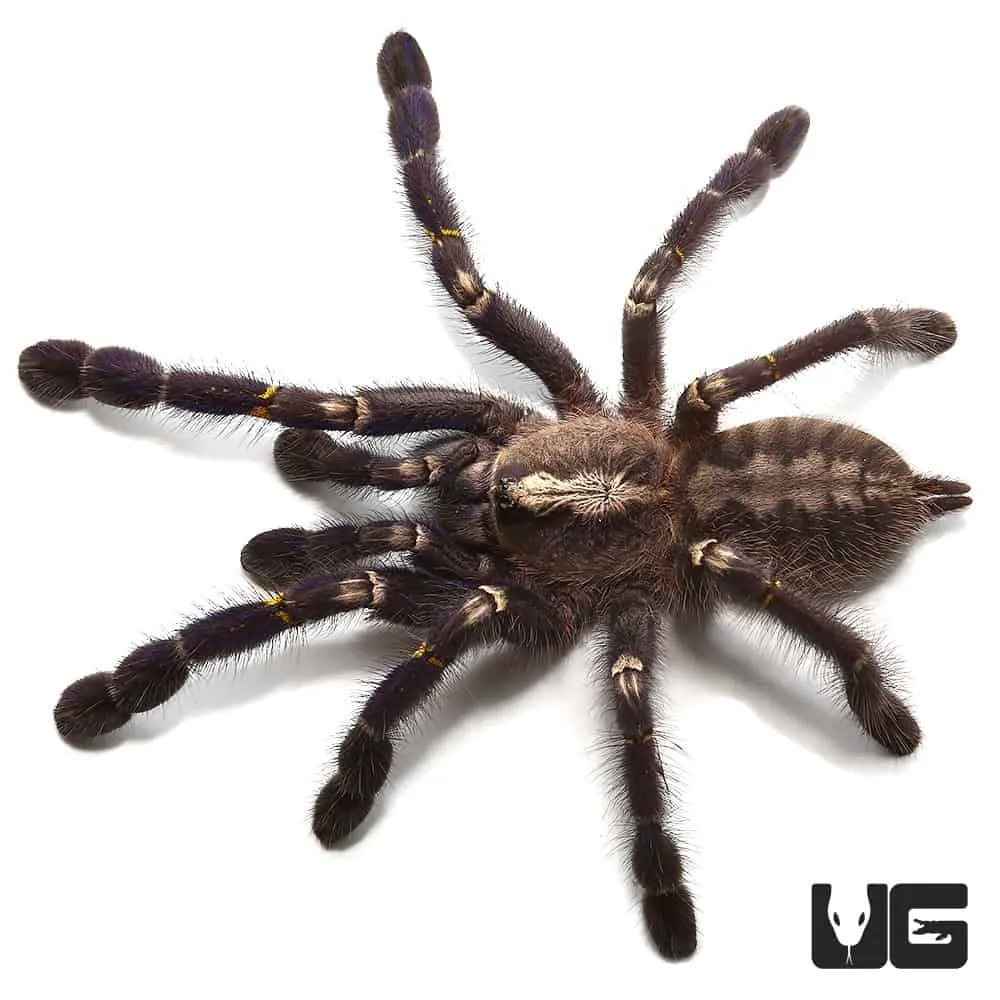
Maintaining the correct temperature and humidity levels is vital for the health of your Sapphire Ornamental Tarantula. They thrive in a warm and humid environment, mimicking their native habitat. The ideal temperature range is between 75-85°F (24-29°C). Humidity levels should be maintained around 60-70%. Regular misting of the enclosure is usually necessary to maintain these levels. The use of a hygrometer and thermometer is crucial for monitoring and maintaining the proper conditions. Maintaining proper temperature and humidity is key to their health.
Feeding and Hydration
Proper feeding and hydration are essential for your Sapphire Ornamental Tarantula. They are opportunistic predators and will readily consume a variety of insects. Crickets, roaches, and mealworms are popular choices, but the size of the prey should be appropriate for the size of the tarantula. Avoid feeding them insects that are larger than their body. Provide a shallow water dish filled with fresh water at all times. Always remove uneaten prey items after a day or two to prevent the build-up of mites and other pests. A balanced diet and consistent hydration are essential for their health and well-being.
Dietary Needs
The diet of a Sapphire Ornamental Tarantula consists mainly of insects. Crickets and cockroaches are the staples in their diet. The frequency of feeding depends on the tarantula’s age and size. Spiderlings and juveniles should be fed more frequently, while adults can be fed less often. It is important to offer a variety of insects to ensure they receive a balanced diet. The insects should be gut-loaded with nutritious foods before being offered to the tarantula. The diet of the tarantula will impact its health and growth.
Watering Requirements
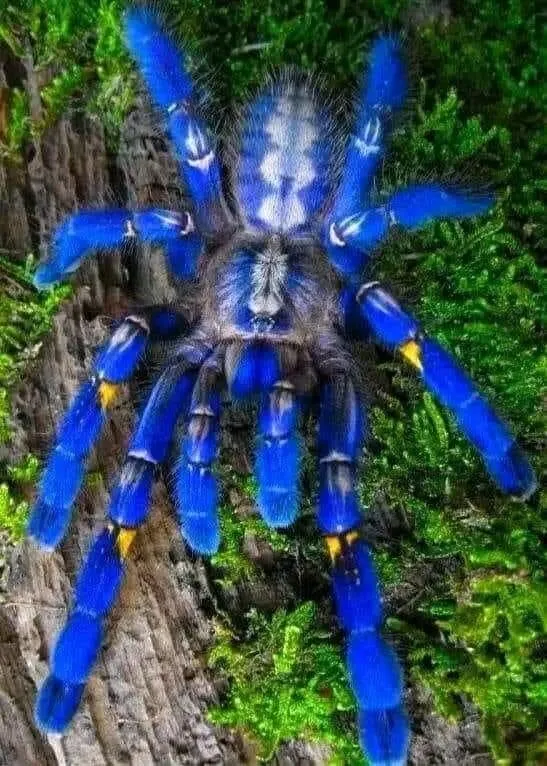
Providing clean, fresh water is essential for hydration. A shallow water dish should be placed in the enclosure at all times. The water should be changed regularly to prevent contamination and the growth of bacteria. Misting the enclosure regularly helps maintain humidity levels, and the tarantula may also drink droplets of water from the enclosure walls. Never let the water dish go dry. Access to water is critical for the survival of the tarantula.
Handling and Safety Precautions
Potential Hazards
Handling Sapphire Ornamental Tarantulas is generally not recommended, especially for novice keepers. Their potent venom and defensive behaviors pose potential risks. Bites can be painful, and their urticating hairs can cause skin irritation. If you must handle your tarantula, do so with extreme caution. Never handle a tarantula if you are not experienced, or if you are unsure of its temperament. Always supervise children around tarantulas. Understanding and respecting the potential hazards associated with this species is key to responsible ownership. Safety is important for the owner and the tarantula.
Conclusion
The Sapphire Ornamental Tarantula is a truly remarkable species, appreciated for its stunning appearance and fascinating behavior. However, their specific needs and the potential risks involved necessitate careful consideration before acquiring one. By understanding their origin, habitat, and care requirements, experienced enthusiasts can successfully keep and appreciate these beautiful creatures. Responsible ownership, encompassing proper housing, feeding, and safe handling practices, is paramount to ensuring the health and well-being of these captivating tarantulas. Careful planning and dedication are required for anyone considering the addition of a Sapphire Ornamental Tarantula to their collection.
